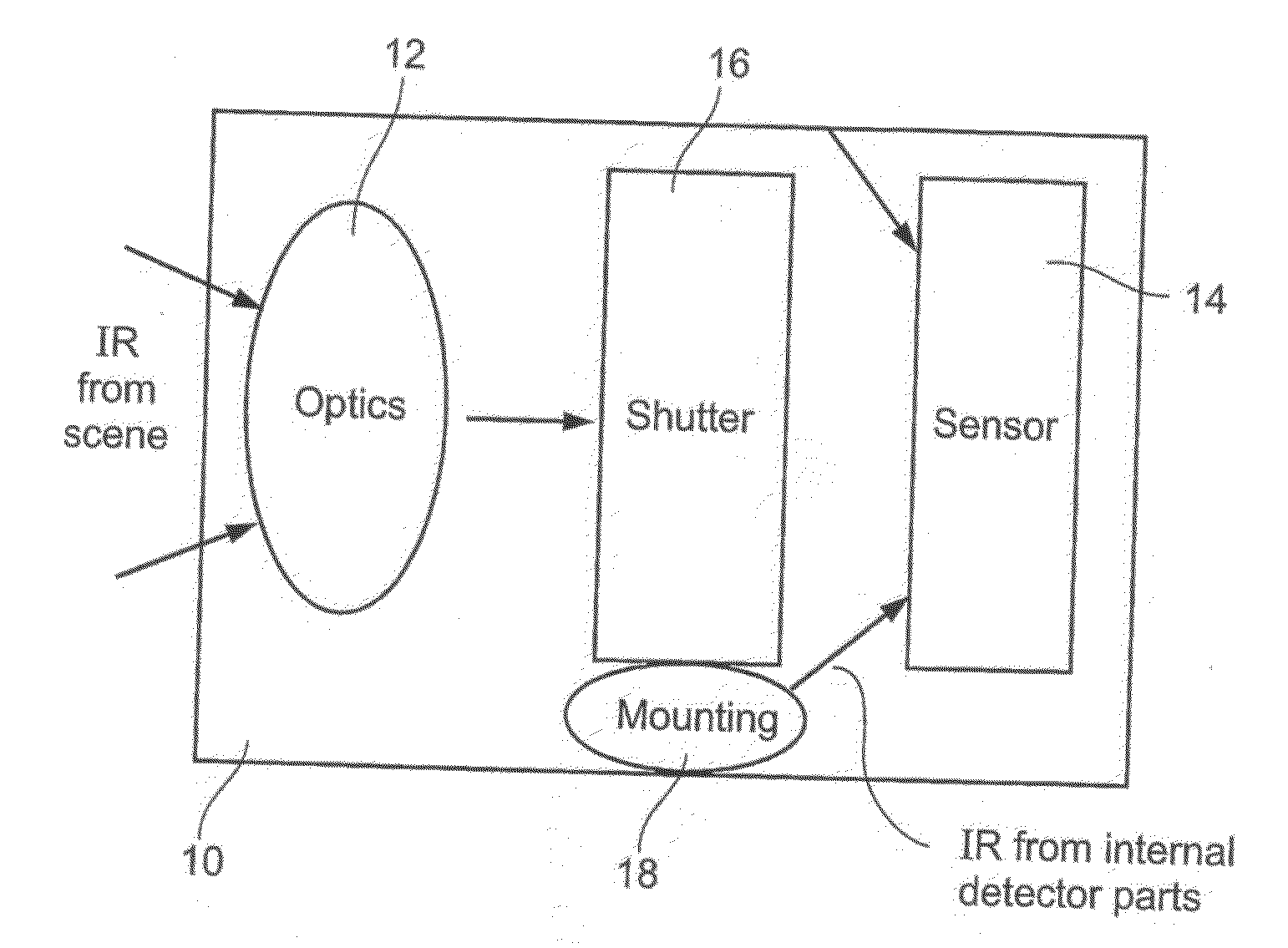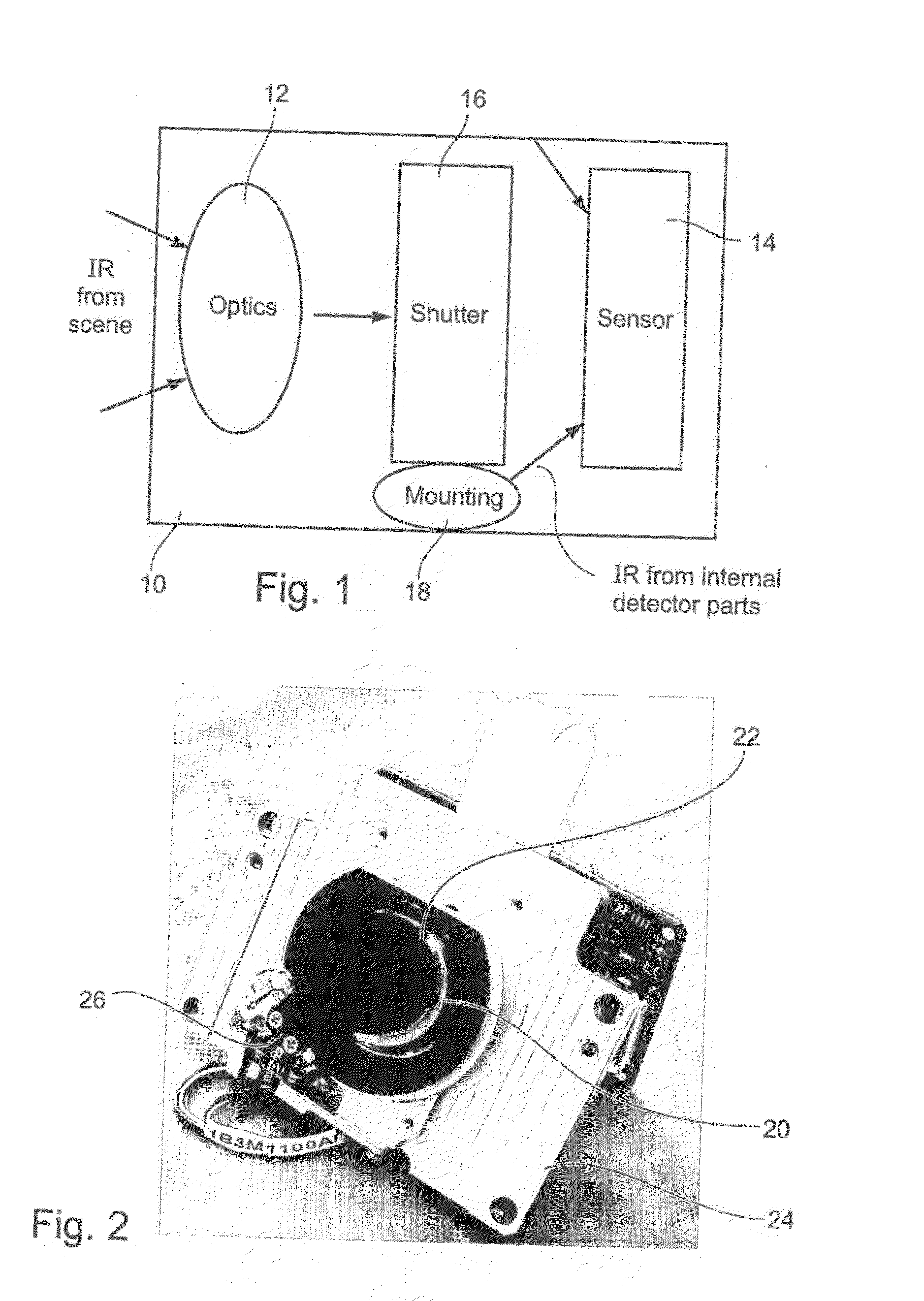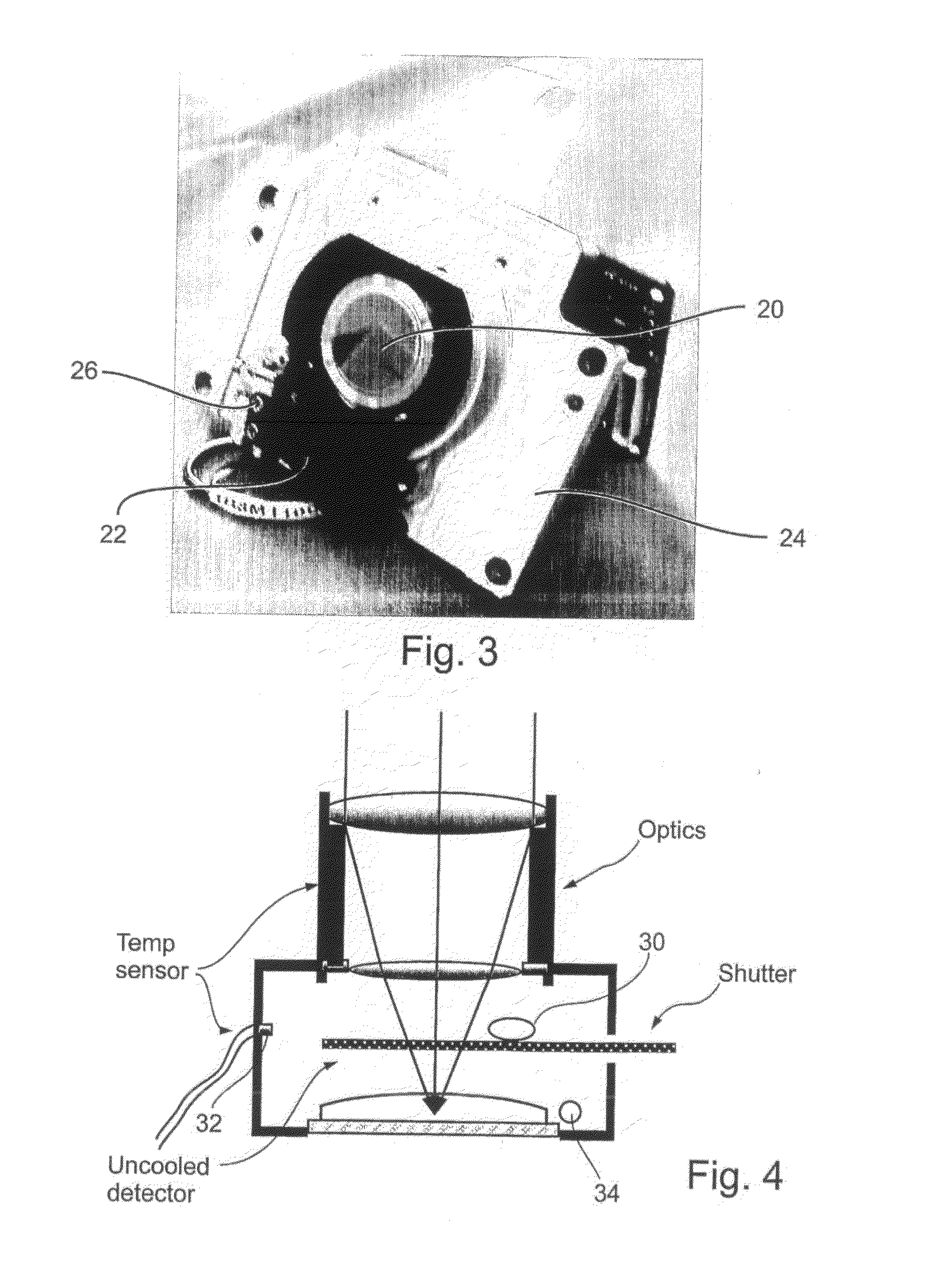Radiometry Using an Uncooled Microbolometer Detector
a microbolometer and detector technology, applied in the field of radiometry using an uncooled microbolometer detector, can solve the problems of blocking the detector field of view of conventional more sophisticated radiometric detectors, unable to meet the uniform incident infrared radiation response of the camera, and building an imaging radiometer
- Summary
- Abstract
- Description
- Claims
- Application Information
AI Technical Summary
Benefits of technology
Problems solved by technology
Method used
Image
Examples
examples
[0217]An implementation of the above-described embodiments was constructed to provide an instrument designed to detect human beings suffering from fever. The instrument monitors the face temperature and any area in the image which is above a predetermined temperature threshold is made to flicker. For such an application the instrument only needs to cover a relatively very small temperature range. A range of 30 to 42 degrees Celsius is more than adequate and can be covered with an accuracy of ±0.25 degrees Celsius. Such an embodiment has applications for use in airports as a convenient and non-invasive detector for screening for carriers of SARS and like infective illnesses.
[0218]The basic concept of temperature measurement using a regular uncooled microbolometer detector is thus provided. The additional hardware required for the temperature measurement capability is limited and inexpensive, thus allowing existing devices to be easily upgraded. It is reasonable to expect that the cap...
PUM
 Login to View More
Login to View More Abstract
Description
Claims
Application Information
 Login to View More
Login to View More - R&D
- Intellectual Property
- Life Sciences
- Materials
- Tech Scout
- Unparalleled Data Quality
- Higher Quality Content
- 60% Fewer Hallucinations
Browse by: Latest US Patents, China's latest patents, Technical Efficacy Thesaurus, Application Domain, Technology Topic, Popular Technical Reports.
© 2025 PatSnap. All rights reserved.Legal|Privacy policy|Modern Slavery Act Transparency Statement|Sitemap|About US| Contact US: help@patsnap.com



